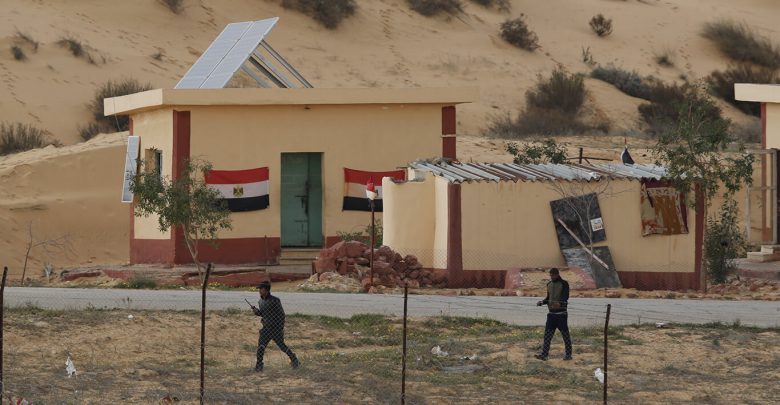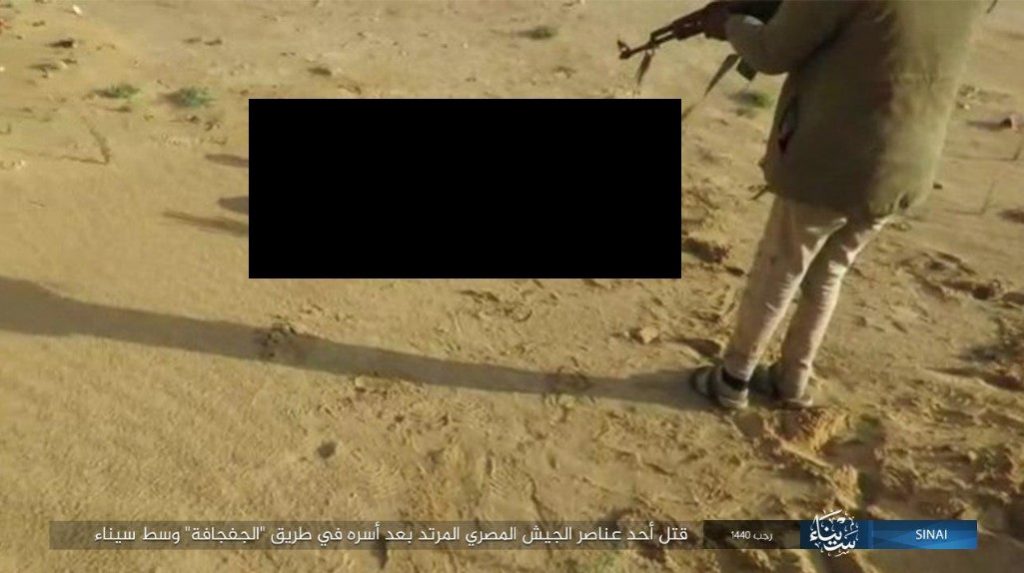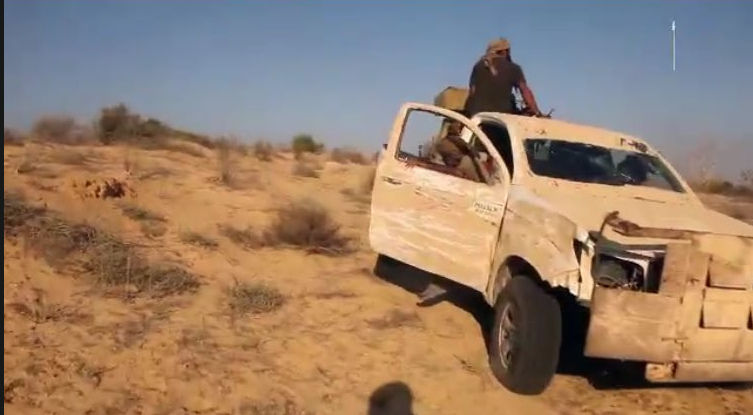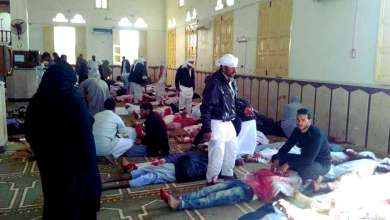
Development of the military situation in Sinai – March
During March 2019, the Islamic State organization’s local affiliate in the Sinai Peninsula, Sinai Province, was able to maintain a steady rate of its capability to inflict losses in the army and police forces, despite the fact that the militant organization did not launch major attacks that resulted in high rates of casualties and losses such as its attack on Gouda-3 military checkpoint in February.
However, the Sinai Province also released a video titled “Pledge and Tenacity” in attempt to enhance the morale of its supporters by presenting scenes of its newest operations, the attack on Gouda-3 military checkpoint.
On the other hand, Egyptian Army Chief of Staff Mohamed Farid early March visited the army and police forces stationed in northern Sinai. This came at a time when Egyptian newspapers on 7 March reported that Gen Joseph Vote, the head of the US military’s Central Command, hailed Egypt’s role in the fight against terrorism in Sinai during a Congress hearing.
In this report we will review the course of military and security operations during March in the Sinai Peninsula, as follows:
Military and security developments
The following graph shows a comparison between the military losses of the two conflicting parties during the last six months, according to sources from both parties as well as the monitoring of the Egyptian Institute of Studies:

First: Casualties and Losses as declared by the Army and militants
– Following are the casualties and losses during March 2019 disseminated from the Egyptian Army communiques and the statements declared by militants as well as media reports:
1- Casualties and Losses as Declared by Egyptian Army
The military spokesman of the Egyptian Army issued three military communiques (1,2,3) on developments of military operations during this month.
The casualties and losses in the ranks of militants according to the data of both ministries of Defense and Interior were as follows:
– 46 militants were killed,
– 100 suspects were arrested,
– 15 “terrorist hotbeds” were targeted and destroyed,
– 2 bombed-out cars were destroyed,
– 23 vehicles and 14 motorcycles were destroyed and seized,
– 19 border tunnels were destroyed,
– 204 improvised explosive devices (IED) were destroyed,
– 40 bombs were confiscated,
– 3 military personnel were killed.

2- Casualties and Losses as Declared by militants and media reports
According to what was monitored by the Egyptian Institute for Political and Strategic Studies in March, the casualties and losses of the army and police forces were as follows:
– At least 19 military personnel, including 4 officers, were killed,
– 3 pro- regime tribal militants were killed,
– At least 8 soldiers were injured.
However, this number of casualties is relatively high, especially that it is not resulting from large military operations.
At the level of operations, the IS-affiliate Sinai Province fought at least 4 armed clashes against the Army, carried out 2 attacks with sniper weapons, and used 5 anti-armored vehicles bombs and 8 improvised explosive devices, resulting in the destruction/damage of 15 military vehicles. The IS local affiliate also maintained targeting the companies that collaborate with the army in central Sinai, leaving 3 civilian workers killed.

Second: Overview of the developments of the military campaign in Sinai Peninsula
Following is an overview of the developments of the military operations in Sinai Peninsula during March 2019:
There was an upsurge in the swift attacks by IS militants against the army and police forces in March, unlike in February, where most of the army’s casualties were the result of the attack on Gouda-3 military checkpoint. However, in March, the Army casualties were the result of multiple minor attacks, ranging from clashes, attacks on checkpoints, use of IEDs and sniping, which indicates that the militant organization is still able to cost the army a number of losses and casualties despite the severe blows against them either as a result of aerial targeting of their leaders and cadres by Israeli drones or as a result of the military operations of the Egyptian army forces on the ground or due to the collapse of the parent organization in Iraq and Syria. Our assessment and observations on the military campaign in March 2019 are as follows:
1- The IS-affiliated organization released a video entitled “Pledge and Tenacity” in attempt to show solidarity with the parent IS organization besieged in Syria and to raise the morale of its supporters by presenting scenes of its newest operations, the attack on Gouda-3 military checkpoint.

2 – The IS organization continued its policy of targeting civilians working in the army forces projects: During this month, the militant organization targeted civilians working in the construction of the fence around El Arish Airport; an army force, including vehicles carrying workers, was targeted, where two workers were killed (Abdo Mustafa Abdo Atwan and Ayman Mohammed Shaaban al-Rabab). The successive attacks led to a temporary suspension of the construction of the fence. Also late March, the IS militants launched an armed attack at Kilo 4 on the Jo’l road in the Maghara (cave) area in central Sinai, amid reports that 17 workers were killed, but we were only able to monitor the killing of one of the workers, Mohamed Naeem Salem Ahmed, 40 years old.
3- The organization’s operations during March focused on targeting armored vehicles using the ICDs, and managed to achieve a steady rate of losses to the army forces.
4- The Egyptian Air Force focused its air raids on the Jihad Abu Tabl area around the city of Arish, as well as the area of Ghurra and other areas south of the city of Sheikh Zwaid.
5- The Egyptian regime continued to adopt the policy of physical liquidation of some of the forcibly disappeared, which can be seen through analyzing the photos of the dead bodies released by the military spokesman’s statement on 11 March, which stated that the army killed 46 people under the pretext of being members of “terrorist” groups killed in armed clashes .
6- The Egyptian Ministry of the Interior continued to tighten restrictions on the freedom of movement of citizens in the cities of El Arish, Sheikh Zuwaid and the remaining part of Rafah.
Third: Israeli drone attacks and violation of sovereignty
We were able to confirm 8 violations of Egyptian airspace by an Israeli drones as follows:
– On 1 March, Israeli drones launched two air raids, targeting the area south of the city of Sheikh Zuwaid.
– On 4 March, Israeli drones launched 6 raids, targeting the Egyptian Rafah area.
It is noteworthy that intervention of “Israeli” drones in Sinai has been taking place on a regular basis since 2011, and Egypt began to pay attention to the use of these drones since 2016. Haitham Ghoneim is an Egyptian researcher and human rights activist.
To Read Text in PDF Format Click here.



